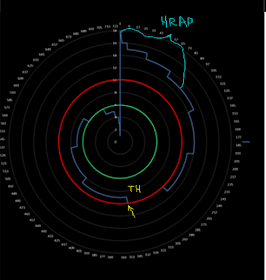Revised: January 2019
By Sarah Owens and Michael Livingston
[Originally posted under the title, "Launching a Local CES."]
 |
| Diagram Courtesy Jimmy Jones/MWVCAA |
Jones says homeless housing and service providers need a CES because that's the only scientific way to ensure that emergency housing resources are spent wisely on people who need it most. He maintains our local programs are currently unable to do that. Is he correct?
Until recently, it was anyone's guess.
We've long known that, save about 20 beds, area housing programs are designed to serve medium-needs clients. However, until recently, we did not understand much about the needs of the homeless in our area.
Now, however, Jones has evidence that a very substantial segment of the homeless in our area are not medium-needs, but high needs. Very high needs. In fact, the proportion of high-needs homeless in this community turns out to be more than twice the national average. Jones says that's in part because most local programs are not designed to serve those most in need, so the need has just continued to grow.
The diagram above illustrates the level of need in Marion and Polk Counties. It is based on vulnerability assessments of 700 homeless individuals by Jones and MWVCAA staff. Each one receives a score on a scale of 0 to 20, with 20 being the most vulnerable. The dark blue line is a graph of all the scores. Read as a clock, those with the highest needs start at 12 o'clock, and continue along the line clockwise to the center, and the lowest score. As you can see, it's not until 6 o'clock (yellow arrow) that the level of need in this community begins to match available, medium needs, services. Medium needs clients score between the red (10) and green (6) circles.
Jones's research says that the "average" client in Marion and Polk Counties scores at the top of the "medium" range for vulnerability, and two points higher than the national average. Based on that data, one would expect the average Marion/Polk client to have greater difficulty, and take more time, moving from the typical medium-needs, transitional housing program to a stable placement. This conclusion is supported by anecdotal evidence of UGM and Salvation Army staff about their guests' higher-than-average needs and longer-than-average stays.
So, how did we get here?
Jones says, historically, local programs have tended to accept, first come, first served, those who fit the program's service and screening criteria. According to Jones, this approach has allowed programs to select lower needs clients from among the many seeking services, and not infrequently amounts to "cherry-picking." But, as there has not until recently been any standardized assessment method, they sometimes get it wrong. He says that putting higher needs clients in medium needs programs doesn't work, either. It's comparable to giving a bed on a maternity ward to someone who needs dialysis. It's not going to help the kidney patient, and it's going to deny someone maternity services.
How, then, can we as a community ensure that programs and services align with actual need? The answer is actually pretty simple. First, we want to make sure there are programs designed to serve the full range of needs, but especially those with the highest needs. Second, providers need to agree that everyone seeking housing and homeless services should be assessed for vulnerability and prioritized to receive services based on their score. No more first come, first served. Lower needs clients are diverted, medium-needs clients go into medium-needs programs, and likewise for high-needs clients, only there will actually be a program designed to stabilize them. That's where the Mayor's Homeless Rental Assistance Program, or HRAP comes in. That's why we need HRAP.
Now, obviously, the system of coordinated assessment and prioritization described in the preceding paragraph, in which everyone seeking housing and homeless services is assessed for vulnerability and prioritized to receive services based on their score, that system does not yet exist. That's what this new series of meetings is intended to change.
How "on board" the provider community is with Jones's vision depends on who you ask, but it's probably safe to say they're skeptical. Skeptical that there's a structural problem, even. They're used to explaining failures in the system on a lack of resources. They don't like anyone suggesting that they could be running their programs more effectively, or should be taking higher needs clients.
Jones was not shy about his message. He told providers their programs fell short on assessments, data collection and sharing, cooperation and coordination with other programs, outreach, permanent supportive housing, implementation of Housing First principles, shelter options, prioritization, efficiency, effectiveness and partnerships with government and businesses. A system of coordinated assessment and entry, one participant said, would make their programs more effective, and their work work easier. But the skepticism remained.
At the end of the hour and a half meeting (during which Jones did most of the talking), the participants were invited to return for a series of meetings designed to cover:
Jun 13 - Data Sharing
Jul 11 - Housing Placements
Aug 8 - HMIS
Sep 12 - Federal/State Funding Sources
Oct 10 - Shelter Policies
Nov 14 - Special Populations
Dec 12 - "Outstanding Issues, Final Determination"
However, in September 2017, after four meetings (July was canceled), Jones informed those who were still in attendance that he didn't "see any point in meeting again." He said much had been done since the group's first meeting in May, though "it was all accomplished outside the meetings."
Unfortunately, he did not describe the accomplishments with any specificity, and there is no record of them, including no written CES partnership agreements or standards.

No comments:
Post a Comment